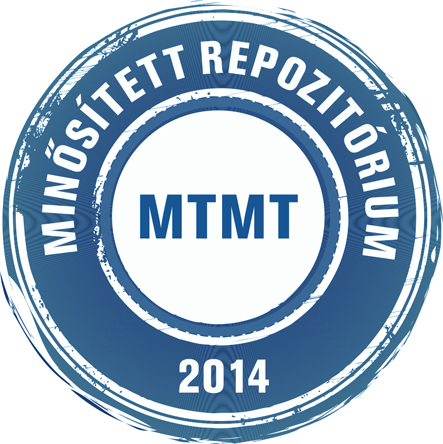Adha Ahmad
A Cross-Cultural Investigation of the Conception of Lie.
Doktori értekezés, Szegedi Tudományegyetem (2000-).
(2023)
|
PDF
(disszertáció)
Download (1MB) |
|
|
PDF
(tézisfüzet)
Download (206kB) |
|
|
PDF
(melléklet)
Download (63kB) |
Magyar nyelvű absztrakt
A filozófiától a nyelvtudományig a hazugság több, különböző diszciplína kutatási tárgyát képezi. Filozófiai nézőpontból számos kutató definiálta a hazugságot, konszenzus azonban nem alakult ki közöttük. A kutatók két nagy csoportba rendeződtek azt a kérdést illetően, hogy a hazugságnak részét képezi-e a megtévesztési szándék: az egyik csoport szerint igen, a másik szerint nem. Abban viszont egyetértés mutatkozott a két csoport között, hogy a hazugság legfontosabb meghatározó eleme az, hogy a beszélő hisz abban, hogy hamis állítást közöl (vö. pl. Sorensen 2007, Mahon 2008, Fallis 2012, Lackey 2013). A nyelvtudományban Coleman és Kay (1981) a prototípus szemantika keretében empirikusan vizsgálták a hazugság fogalmát, amerikai-angol anyanyelvű beszélőkkel végeztek kérdőíves vizsgálatot. A kísérlet eredményei alátámasztották a filozófusok érvelését a hamisságban való hit fő szerepéről. Emellett Coleman és Kay (1981) eredményei a megtévesztési szándék és az objektív hamisság hazugságban való jelenlétét is mutatták. Coleman és Kay (1981) kísérletének megismétlései hasonló konklúziókhoz vezettek (l. Pl. Cole 1996, Hardin 2010) Felmerül a kérdés, hogy vajon a hazugság ilyen módon nyert meghatározása mennyiben tekinthető univerzálisnak. A disszertáció ezt a kérdést törekszik megválaszolni Coleman and Kay (1981) kísérletének adaptív megismétlésével indonéz, mandarin kínai, magyar és orosz anyanyelvű beszélőkre támaszkodva. Az empirikus vizsgálatok alapját a Coleman és Kay (1981) által használt, 8 történetből álló kérdőív adott kultúrára készült adaptációja képezte. A vizsgálat fő célja annak kiderítése, hogy vajon támogatják-e a különböző nyelvek beszélőivel folytatott vizsgálatok eredményei a hazugság Coleman és Kay (1981) által feltételezett összetevőit és a közöttük talált sorrendet. A kutatás továbbá, arra a kérdésre is kereste a választ, hogy milyen tényezők befolyásolják a hazugság interpretációját, valamint a hazugság különböző típusainak (pl. féligazságok, hamis implikatúrák, kegyes hazugságok) percepcióját. Az eredmények azt mutatják, hogy az indonéz és mandarin kínai beszélők a hamisságban való hitet nem vették figyelembe a történetek megítélésében, számukra a hazugság legfontosabb eleme az objektív hamisság volt. A magyar és az orosz beszélők számára legfontosabb elemnek a hamisságban való hit bizonyult. A hazugság interpretációját a következő tényezők befolyásolták: (1) a vallás, (2) a történet szereplői közötti szociális távolság, (3) a beszélő életkora. A hazugság különböző típusait illetően az derült ki, hogy az indonéz és a mandarin kínai adatközlők a hamis implikatúrát inkább hazugságnak minősítik mint a magyar és orosz beszélők. A féligazságokra vonatkozóan minden csoportnak bizonytalan volt a megítélése, a kegyes hazugságokat pedig minden csoport elfogadhatónak vélte. A fentiek alapján a kutatás konklúziójaként megfogalmazható, hogy a nyugati filozófiai hagyomány által feltételezett hazugságfogalom nem univerzális, kulturális különbségek mutatkoznak abban, hogy mi a hazugság legfontosabb összetevője.
Absztrakt (kivonat) idegen nyelven
Lying has been explored by scholars in a number of fields, from philosophy to linguistics. From the perspective of philosophy, several scholars have provided a definition of the word lie. However, there is no unanimous definition. The lack of consensus creates division even among the scholars who research the topic of lie, dividing them into deceptionists and non-deceptionists. The deceptionist scholars suggest that a lie needs intention to deceive, while the non-deceptionist scholars dispute this argument. One thing in common between these camps is that they all have an agreement that believed-false is the most prominent element to determine a lie. Believed-false determines a lie based on the belief of the speaker that the proposition is false. In another research field, Coleman and Kay’s (1981) conducted a prototypical semantic research of the English word lie with English native speakers as respondents. The results of Coleman and Kay’s (1981) study support the philosophers’ argument. Since the definition of lie is mainly given by Western philosophers and also many experimental studies have been conducted in the Western lingua-cultures, it would be interesting to find out whether the perception and judgement of lying is shared universally. In order to do that, the present research follows the methodology of Coleman and Kay (1981)The data for this dissertation was collected using a questionnaire containing at least eight stories. Respondents from four countries: Indonesians, Chinese, Hungarians and Russians, filled out the questionnaire. The main question of the research is whether these lingua-cultural groups support the suggested elements of Coleman and Kay (1981) and their order of the elements. The research also addresses the factors involved in the interpretation of lying, and the perception of several types of lies, such as half-truth, untruthful implicatures, and white lies. The primary finding was belief-false were disregarded by Indonesian and Chinese people. These two groups considered falsehood or objective falsity as the most important element, whereas Hungarians and Russians perceived believed-false or subjective falsity as the most prominent element to define lying. Several factors were involved in the interpretation of lying, such as (1) the religion, (2) the social distance of the interlocutors, and (3) the age of the speaker. Regarding the types of lie, Indonesians and Chinese people consider untruthful implicature as a more lie-like statement, whereas Hungarians and Russians perceive it to be less lie-like. Moreover, all lingua-cultural groups have uncertain perception regarding half-truth and perceive a white lie as an acceptable and justified lie. The consideration that lie should be universally defined as the speaker’s false belief is the result of the tendency of ethnocentric discussion of lying by the Western scholars.
| Mű típusa: | Disszertáció (Doktori értekezés) |
|---|---|
| Publikációban használt név: | Adha Ahmad |
| Témavezető(k): | Témavezető neve Beosztás, tudományos fokozat, intézmény MTMT szerző azonosító Németh T. Enikő MTA doktora, Általános Nyelvészeti Tanszék SZTE / BTK / MNYII 10006150 |
| Szakterület: | 06. Bölcsészettudományok > 06.02. Nyelvek és irodalom > 06.02.06. Nyelvészet > 06.02.06.03. Nyelvhasználat: pragmatika, szociolingvisztika, beszédelemzés, idegennyelv-tanulás és tanítás, lexikográfia, terminológia |
| Doktori iskola: | Nyelvtudományi Doktori Iskola |
| Tudományterület / tudományág: | Bölcsészettudományok > Nyelvtudományok |
| Nyelv: | angol |
| Védés dátuma: | 2023. május 23. |
| Kulcsszavak: | lie, conception of lying, cross-culture, pragmatics |
| EPrint azonosító (ID): | 11640 |
| A mű MTMT azonosítója: | 34137187 |
| doi: | https://doi.org/10.14232/phd.11640 |
| A feltöltés ideje: | 2023. feb. 28. 15:55 |
| Utolsó módosítás: | 2023. szept. 12. 15:42 |
| Raktári szám: | B 7225 |
| URI: | https://doktori.bibl.u-szeged.hu/id/eprint/11640 |
| Védés állapota: | védett |
Actions (login required)
 |
Tétel nézet |






